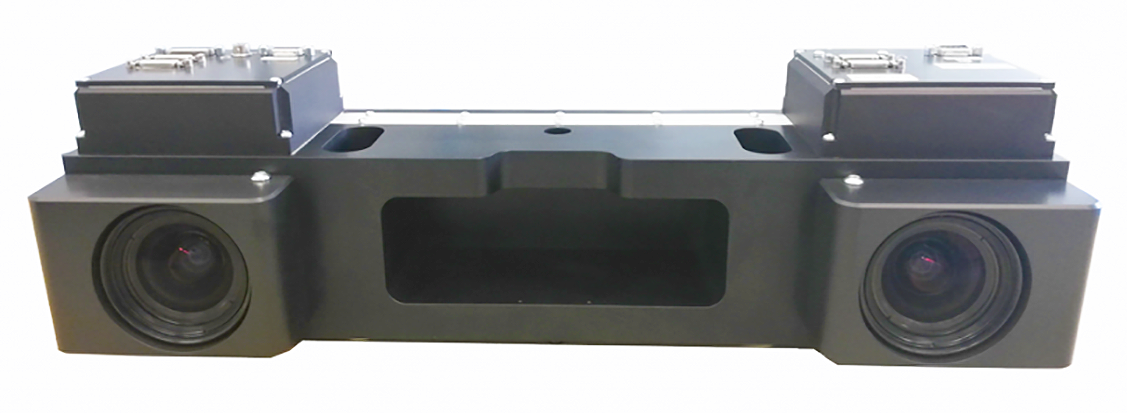Manual road surface inspection is a costly, tedious process for municipalities and is strongly subject to interpretation error. Trained personnel must survey the condition of the road surface, visually detect cracks, potholes or other distress, measure the severity, and finally, assess and record the location of each defect for maintenance departments to repair.
 Chromasens Road Inspection Camera. Image Credit: Chromasens GmbH
Chromasens Road Inspection Camera. Image Credit: Chromasens GmbH
To help in the development of an automated road inspection solution, Chromasens has introduced its new 3DPIXA RI stereo line-scan camera. Equipped with a tri-linear CCD line-sensor and a very large field of view (4400mm), it is capable of acquiring high-resolution inline images of continuous road surfaces as wide as 14.4 feet in one pass when installed on a standard vehicle. As a line-scan stereo camera, the 3DPIXA Rl records road conditions line-for-line at an optical resolution of 615µm, simultaneously capturing 3D height measurements and 2D color images for analysis. Even at full resolution, the camera has an ultra-fast line frequency of 30kHz, with higher speeds possible with lower resolutions. As a result of this advanced optical design, a road profile of 1mm spatial resolution can be measured down to 0.2mm to 0.5mm. Also, the vehicle on which the camera system is mounted can travel at maximum speeds of 62mph to avoid delaying traffic or becoming a hazard itself while monitoring road conditions.
"All across Europe, North America and Asia, thousands of miles of roadway have been automatically inspected using Chromasens 3DPIXA cameras and LED illumination modules," said Jeremy Jowers, Director of Sales and Business Development Sales Americas for Chromasens. "Now we've taken that experience to create the 3DPIXA RI camera that is engineered specifically for this application."
To ensure homogenous illumination over the whole field of view, Jowers recommends the integration of the Chromasens Corona II LED lighting module in Dark Field mode with blue LEDs. It delivers excellent brightness without color aberration. The unit's lightweight, compact footprint mounts easily onto standard vehicles, while its four focal types allow for versatility in system design.
A recent study by the American Automobile Association showed that over the past five years approximately 16 million cars across the U.S. have suffered damage from potholes. The 3DPIXA RI is capable of not only detecting the width of a pothole but its depth, as well, by generating a 3D model with point cloud of the hole. It can even detect if an existing asphalt repair is in good condition by measuring height variations in the road.
The Chromasens 3DPIXA RI comes with the Chromasens 3D-API for software integration and supports libraries from HALCON (MVTec), MIL (Matrox), LabVIEW (National Instruments), and Coake (SAC). Its Camera Link interface is universally compatible with third-party frame grabbers, cables and accessories.